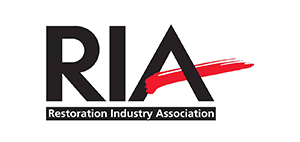Water damage is a common issue that homeowners face, and it can cause significant damage to your property if not addressed promptly. Understanding the different types of water damage is crucial in protecting your home and preventing further issues. In this quick guide, we will provide an overview of the various types of water damage, from clean water damage to more severe categories.
Water damage can occur due to various reasons, such as leaks, floods, or plumbing issues. Different types of water damage can affect your home, ranging from clean water damage to black water damage. It’s essential to identify the type of water damage you’re dealing with to implement the appropriate cleanup and restoration measures.
- Understanding the different types of water damage is crucial for effectively protecting your property.
- Category 1 water damage refers to clean water sources and poses the least risk.
- Category 2 water damage involves water from sources that contain some level of contamination.
- Category 3 water damage is the most severe and hazardous type, originating from highly contaminated sources.
- Structural water damage can impact the integrity of a building’s structure and requires immediate attention.
Category 1: Clean Water Damage
When it comes to water damage, category 1 refers to clean water sources. These sources could include broken pipes, overflowing sinks, or rainwater. Unlike other categories of water damage, clean water poses the least risk because it is not contaminated. However, it is important to note that if category 1 water damage is left untreated, it can quickly escalate to more severe categories.
Addressing clean water damage promptly is crucial to prevent further issues and potential mold growth. Even though the water may initially be clean, it can become an ideal breeding ground for mold spores if it is allowed to stagnate for an extended period of time. Therefore, it is essential to assess and mitigate the damage as soon as possible.
In the case of clean water damage, you may be able to handle the cleanup and restoration process yourself if the affected area is small and the damage is minimal. However, it is always advisable to consult a professional water damage restoration company to ensure thorough remediation and to minimize the risk of hidden damage.
Remember, even though category 1 water damage may seem harmless initially, taking immediate action is important to prevent further complications and the need for extensive repairs. By addressing clean water damage proactively, you can safeguard your property and maintain a healthy living environment.
Learn more about the different categories of water damage and how to protect your property in our comprehensive guide.
List of recommended actions for addressing clean water damage:
- Turn off the water source and stop the flow of water.
- If safe to do so, remove any standing water using a wet-dry vacuum or mop.
- Thoroughly dry the affected area using fans, dehumidifiers, or natural ventilation.
- Remove and discard any damaged materials that cannot be effectively cleaned or dried, such as carpets or insulation.
- Clean and disinfect the remaining surfaces using mild soap, water, and a bleach solution.
- Monitor the area for any signs of mold or further damage.
- Consider contacting a professional water damage restoration company for a detailed assessment and comprehensive cleanup.
| Category | Definition | Examples | Severity |
|---|---|---|---|
| Category 1 | Clean Water | Broken pipes, overflowing sinks, rainwater | Least severe, but can escalate if untreated |
| Category 2 | Grey Water | Dishwasher or washing machine leaks, toilet overflow, minor sewage backups | Moderate severity, potential health risks |
| Category 3 | Black Water | Sewage backups, flooding, stagnant water | Most severe, hazardous and requires professional help |
Category 2: Grey Water Damage
Grey water damage is a category of water damage that occurs when water from various sources contains a certain level of contamination. This type of water damage poses potential risks to your health and property due to the presence of chemical or biological pollutants. It is crucial to take immediate action to mitigate the damage and ensure the safety of your surroundings.
Grey water can originate from different sources, such as dishwasher or washing machine leaks, toilet overflow, or minor sewage backups. Although not as hazardous as black water damage, grey water can still be harmful if ingested or exposed to the skin. Proper protective measures need to be taken to minimize the risks.
When grey water damage occurs, it is recommended to seek professional assistance for the cleanup and restoration process. They are equipped with the knowledge and expertise to handle the contaminated water properly and restore your property back to its pre-damaged condition.
Avoiding contact with grey water is essential to ensure your well-being. Immediate steps should be taken to contain the damage and prevent further spread. Here are some guidelines to follow when dealing with grey water damage:
- Wear protective clothing, gloves, and masks to minimize exposure to contaminants.
- Avoid direct contact with the contaminated water.
- Turn off the source of the grey water if possible.
- If you can do so safely, remove any items that have come into contact with the contaminated water.
- Thoroughly clean and disinfect all affected areas.
- Ensure proper ventilation to prevent the growth of mold and mildew.
- Dispose of any damaged materials following local regulations and guidelines.
By taking immediate action and following these recommendations, you can minimize the impact of grey water damage and protect your property and well-being.
| Grey Water Damage | Recommended Actions |
|---|---|
| Identify the source of the grey water | Turn off the water source and address the issue |
| Protective Measures | Wear gloves, masks, and other protective clothing |
| Containment | Prevent further spread of grey water |
| Cleanup and Disinfection | Thoroughly clean and disinfect affected areas |
| Professional Assistance | Seek professional help for proper cleanup and restoration |
Category 3: Black Water Damage
When it comes to water damage, category 3 is the most severe and poses significant health risks to you and your property. Black water damage occurs when highly contaminated water infiltrates your home from sources like sewage backups, flooding from rivers or streams, or stagnant water.
Black water contains harmful bacteria, viruses, fungi, and chemicals that can cause serious illness or infections. It is crucial to treat black water damage with extreme caution and seek professional help for cleanup and restoration.
If you encounter black water damage in your home, remember:
- Contact a professional water damage restoration company immediately.
- Avoid contact with the water to prevent exposure to contaminants.
- Do not attempt to handle the cleanup and restoration on your own.
- Ensure thorough disinfection and sanitization of affected areas.
- Dispose of contaminated materials properly.
- Address any underlying issues that caused the black water damage.
By taking immediate action and seeking professional assistance, you can minimize the health risks associated with black water damage and safeguard the well-being of your home and family.
| Category | Source | Contamination Level | Health Risks |
|---|---|---|---|
| Category 1: Clean Water Damage | Broken pipes, overflowing sinks, rainwater | Low | Minimal health risks |
| Category 2: Grey Water Damage | Dishwasher leaks, washing machine leaks, toilet overflow | Moderate | Moderate health risks |
| Category 3: Black Water Damage | Sewage backups, flooding, stagnant water | High | Significant health risks |
Structural Water Damage
Structural water damage refers to any damage that affects the integrity of a building’s structure. This type of damage can have severe consequences if left unaddressed. It often manifests itself in weakened foundations, rotting wood, compromised walls or floors, and sagging ceilings. Structural water damage can occur due to various sources, including leaks, seepage, or flooding.
When structural water damage occurs, it is crucial to take immediate action to prevent further issues. Ignoring the problem can lead to more significant structural damage and pose safety hazards. Timely intervention can help save your property and avoid costly repairs.
It’s important to understand that structural water damage can be challenging to detect or assess fully. In some cases, the damage may not be visible until it has already progressed significantly. Therefore, if you suspect structural water damage in your home or building, it’s best to consult with a professional water damage restoration company.
These experts have the knowledge, experience, and tools to assess the extent of the damage and develop an effective plan for repairs. They can also address any underlying issues that may have contributed to the water damage, such as plumbing leaks or inadequate drainage.
By promptly addressing structural water damage, you can safeguard your property and ensure the stability and longevity of your home or building.
Conclusion
Water damage is a serious threat to your home that should not be underestimated. If left unaddressed, it can cause devastating effects on your property and compromise its safety and stability. That’s why it’s crucial to take proactive steps to protect your home from water damage.
By understanding the different types of water damage, such as clean water damage, grey water damage, and black water damage, you can better identify potential risks and implement preventive measures. Regularly inspect your plumbing system, ensure proper drainage, and maintain your appliances to minimize the chances of water damage.
In case of water damage, it’s essential to reach out to professionals who specialize in water damage cleanup and restoration. They have the expertise, tools, and knowledge to effectively mitigate the damage and restore your property to its pre-loss condition. Don’t attempt to handle water damage on your own, as it can lead to further complications and health hazards.
Remember, your home is one of your most significant investments. Safeguarding it against water damage is vital for its longevity and your peace of mind. Take the necessary precautions, be vigilant, and seek professional assistance when needed to protect your property from water damage.
FAQ
What are the different types of water damage?
The different types of water damage include clean water damage (Category 1), grey water damage (Category 2), and black water damage (Category 3).
What is clean water damage?
Clean water damage refers to water from clean sources such as broken pipes, overflowing sinks, or rainwater. This type of water is not contaminated and poses the least risk.
What is grey water damage?
Grey water damage involves water from sources that contain some level of contamination, such as dishwasher or washing machine leaks, toilet overflow, or minor sewage backups. It may contain chemical or biological pollutants.
What is black water damage?
Black water damage is the most severe and hazardous type, involving water from highly contaminated sources such as sewage backups, flooding, or stagnant water. It may contain harmful bacteria, viruses, fungi, and chemicals.
What is structural water damage?
Structural water damage refers to any damage that affects the integrity of a building’s structure, such as weakened foundations, rotting wood, compromised walls or floors, and sagging ceilings. It can result from leaks, seepage, or flooding.
How can I protect my property from water damage?
To protect your property from water damage, it is important to address any water issues promptly. Regularly check for leaks, maintain proper drainage systems, and ensure your home is properly insulated. Consider installing a sump pump and have a professional assess your property for potential vulnerabilities.
Should I hire professionals for water damage cleanup and restoration?
Yes, it is highly recommended to hire professionals for water damage cleanup and restoration. They have the expertise and equipment to safely remove water, dry affected areas, and mitigate further damage. They can also help with mold remediation and ensure your home is restored to its pre-damage condition.










